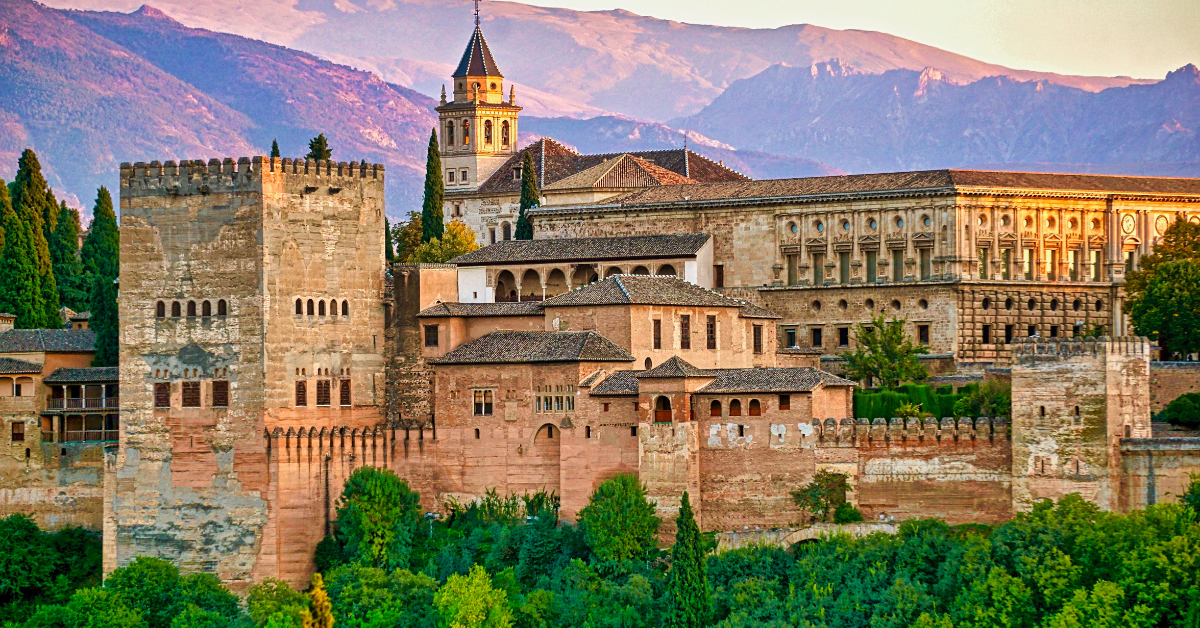The Alhambra Palace is a majestic blend of Islamic art and Spanish history. For Japanese visitors, its intricate decorations and serene gardens evoke unique emotions. This article explains how Japanese sensibilities add a different layer of meaning to the Alhambra, offering new perspectives for foreign travelers.
- The Japanese Sense of Wabi-Sabi and the Contrast with the Alhambra
- Japanese Gardens and the Alhambra Gardens – Shared Sensibilities
- Calligraphy in Japan and Islamic Ornamentation – A Shared Art Form
- Japanese Reactions to the “Layers of Time” in the Alhambra
- Advice for Foreign Visitors – Discovering the Japanese Way of Appreciation
- Conclusion
The Japanese Sense of Wabi-Sabi and the Contrast with the Alhambra
The Japanese have a culture that values simplicity and quietness. The aesthetic of wabi-sabi, seen in tea ceremony spaces and Zen gardens, may at first seem opposite to the grandeur of the Alhambra. Yet, when visiting the palace, many Japanese find peace in its walls filled with geometric patterns and in the still waters of its pools. They often describe it as “luxury within silence.”
Islamic geometry often symbolizes eternity and cycles, which resonates with Japanese design motifs that also use repetition to express harmony and continuity. While ornate, the Alhambra’s strict symmetry leaves a strong impression on Japanese visitors, who see in it a refined order beyond decoration.
| Perspective | Japanese Culture | Alhambra Palace |
|---|---|---|
| Aesthetic | Wabi-sabi, beauty in silence | Geometric motifs, brilliance in order |
| Expression | Tea rooms, Zen gardens, calligraphy | Stucco decorations, calligraphy |
| Perception | Value in “empty space” | Comfort in “repetitive order” |
Japanese Gardens and the Alhambra Gardens – Shared Sensibilities
The gardens of the Alhambra are characterized by water-centered design, typical of Islamic architecture. With fountains and channels, they refresh both eyes and spirit. Japanese gardens likewise place emphasis on water, whether through actual ponds or the symbolic streams of Zen rock gardens.
| Perspective | Japanese Gardens | Alhambra Gardens |
|---|---|---|
| Use of Water | Symbolized in ponds or dry landscapes | Real fountains and channels |
| View of Nature | Silence and emptiness emphasized | Water sounds and light reflections |
| Appreciation | Enjoyed through seasonal changes | Order felt through geometric design |
While Japanese gardens reflect seasonal impermanence, the Alhambra gardens highlight eternal harmony through light and water. Japanese visitors sense differences, yet they also recognize a shared philosophy of water as a bridge between humans and nature.
Calligraphy in Japan and Islamic Ornamentation – A Shared Art Form
For Japanese people, writing is not just communication but an art form. Calligraphy seeks to capture spirit and beauty in every stroke. Similarly, the Arabic inscriptions carved into the walls of the Alhambra breathe life into letters as living patterns.
The comparison with Japanese hanging scrolls and folding screens reveals a shared aesthetic: in both cultures, letters are more than words, they shape and enrich space.
| Perspective | Japanese Calligraphy | Arabic Calligraphy |
|---|---|---|
| Method | Brush and ink strokes | Carvings and stucco inscriptions |
| Artistic Aim | Strength of line, beauty of space | Curves and repetitive motifs |
| Perception | Spiritual and meditative | Religious and symbolic |
Japanese Reactions to the “Layers of Time” in the Alhambra
The Alhambra has witnessed transitions from Islamic rule to Christian dominance, making it a living monument of layered history. Japanese visitors often resonate with this, since their own temples and castles also embody centuries of change.
Yet, one striking difference lies in materials. Japan’s wooden architecture accepts decay as part of its beauty, while the Alhambra’s stone and stucco construction preserves form across centuries. Japanese travelers often marvel at this contrast, calling it an encounter with a different philosophy of time.
| Perspective | Japanese Architecture | Alhambra Palace |
|---|---|---|
| Materials | Mainly wood | Stone and stucco |
| Historical View | Value in decay and impermanence | Value in preservation and permanence |
| Cultural Experience | Enjoying change over time | Experiencing cultural fusion |
Advice for Foreign Visitors – Discovering the Japanese Way of Appreciation
Knowing the Japanese way of experiencing the Alhambra can add depth for international visitors. Rather than only admiring grandeur, the Japanese tend to focus on quietness, order, and subtle harmony.
Japanese visitors often appreciate by standing still and reflecting silently, letting details reveal themselves slowly. Foreign tourists can gain richer experiences if they, too, pause to listen to the sound of water and study the motifs on the walls.
| Visitor Behavior | Japanese | Western Tourists |
|---|---|---|
| Viewing Style | Silent observation, valuing empty space | Constant movement, photography |
| Focus | Details of patterns and water sounds | Overall architecture and scale |
| Expressions | “Calming,” “soothing” | “Grand,” “beautiful” |
Conclusion
The Alhambra is renowned for its Islamic grandeur, but Japanese visitors discover in it echoes of their own cultural values: wabi-sabi, the beauty of gardens, the art of writing, and the layering of history. For foreign travelers, learning about this perspective can deepen understanding of the palace’s charm.
Majestic yet tranquil, preserved yet layered with time, the Alhambra is more than a monument. When seen through Japanese eyes, it becomes a space of cross-cultural dialogue, offering an unforgettable and profound experience that transcends sightseeing.






